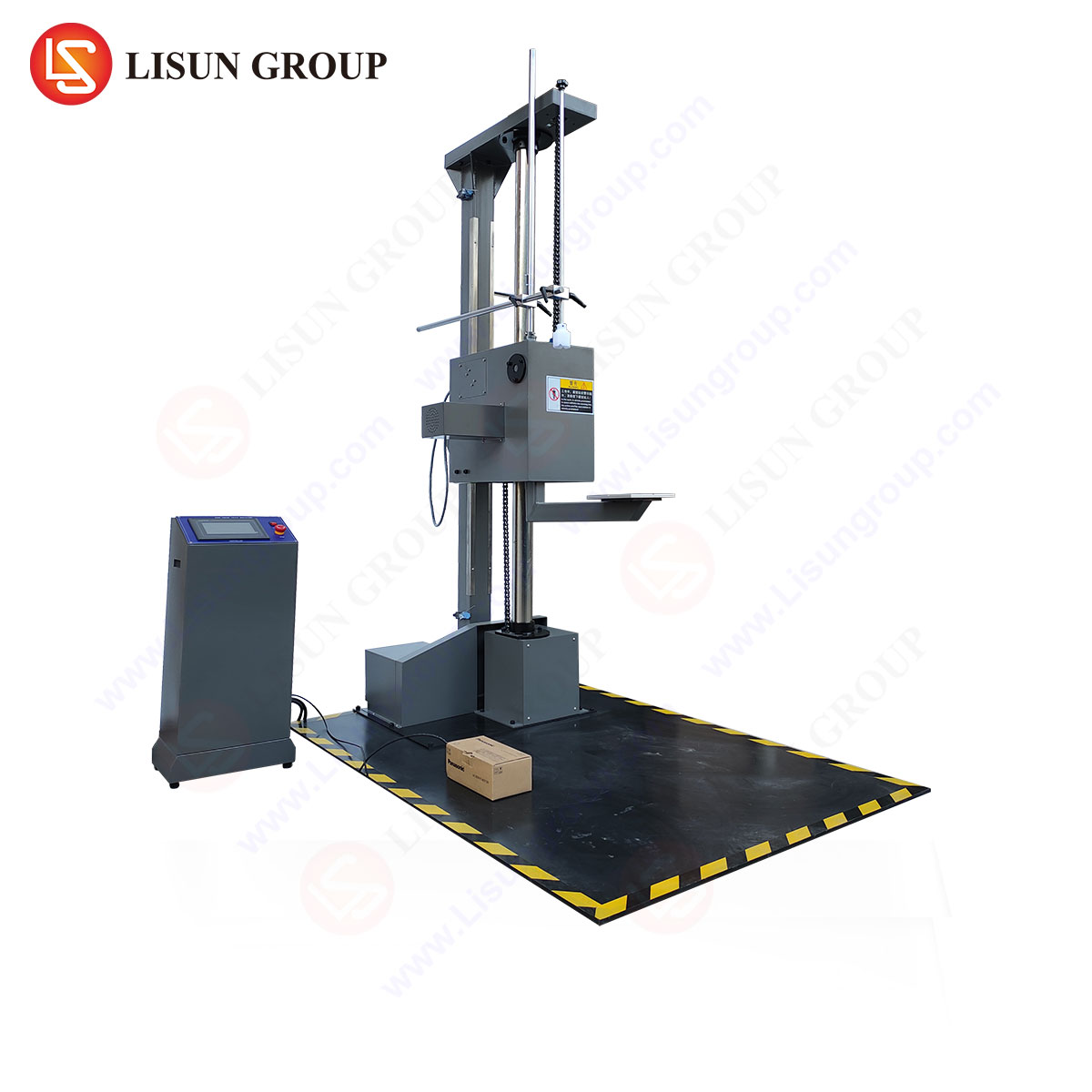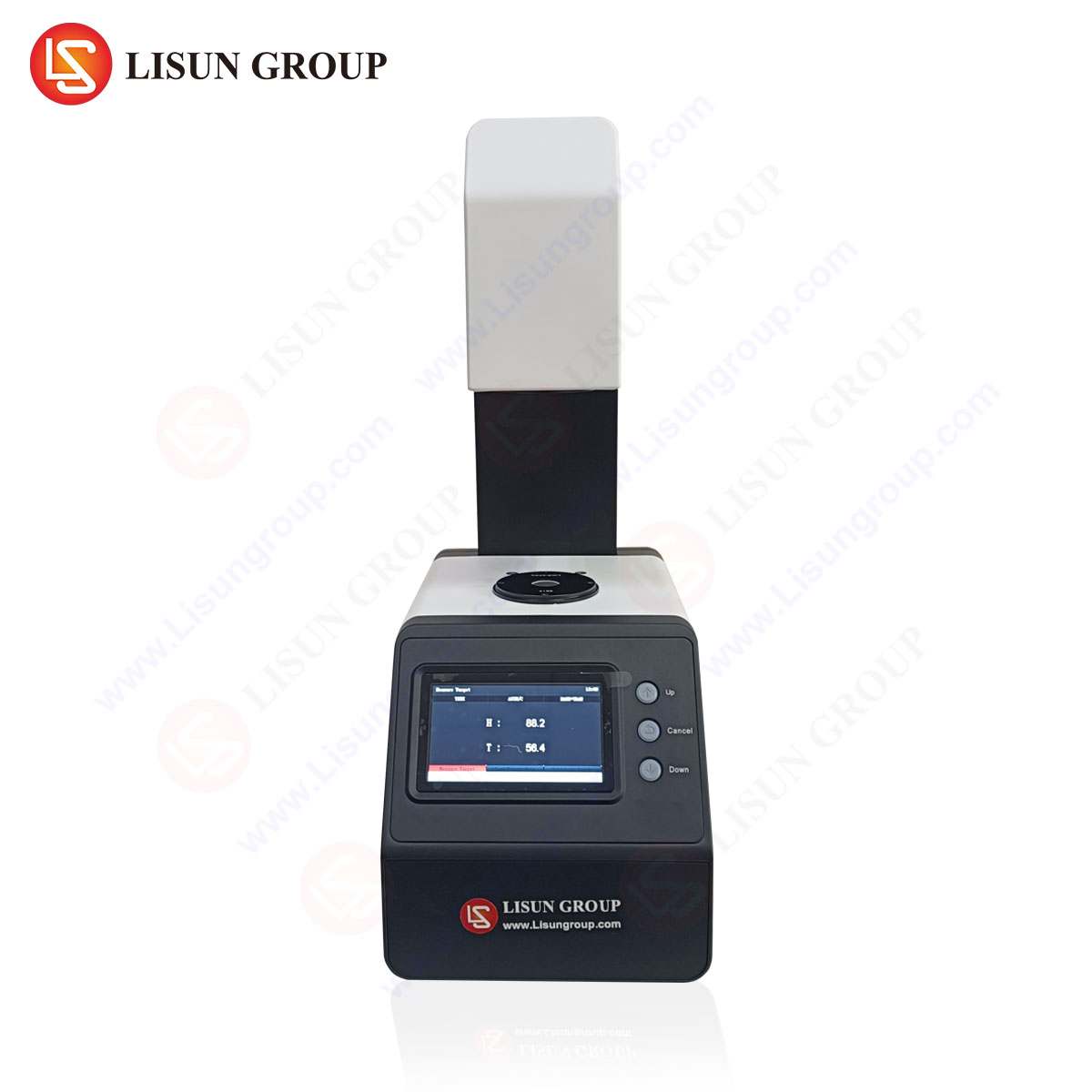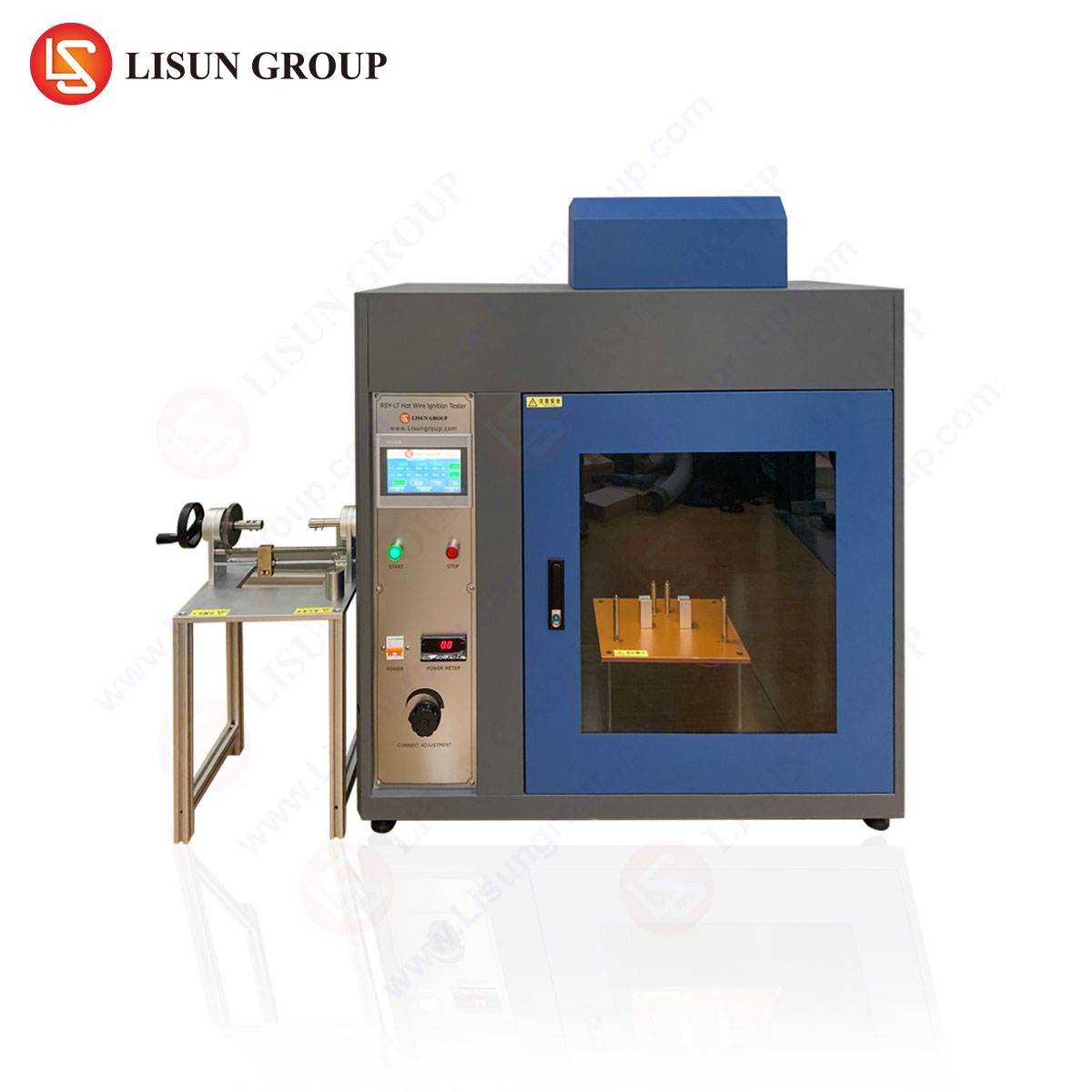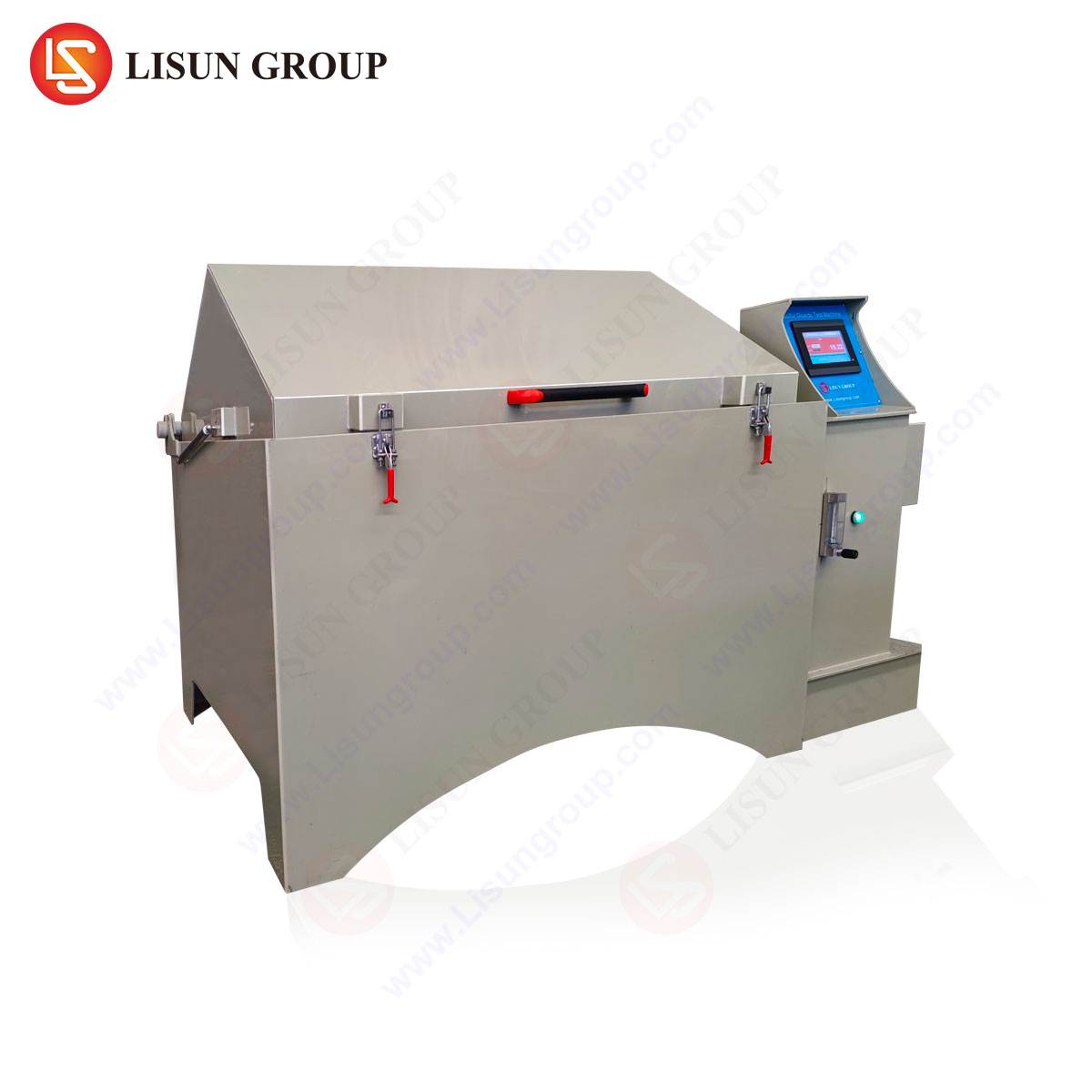The Critical Role of High-Current Arc Ignition Testing in Electrical Safety and Reliability
Abstract
The proliferation of complex electronic systems across diverse industries has necessitated the development of rigorous testing methodologies to evaluate component endurance under extreme electrical stress. High-current arc ignition represents a significant failure mode, particularly in scenarios involving loose connections, component degradation, or contamination. This technical guide examines the principles, standards, and practical applications of high-current arc ignition testing, with a specific focus on the methodologies enabled by advanced testing apparatus such as the LISUN HCAI-2 High Current Arc Ignition Test System. The analysis underscores the test’s indispensability for validating the safety, longevity, and operational integrity of electrical components and insulating materials.
Fundamental Principles of High-Current Arcing Phenomena
An electric arc is a sustained luminous electrical discharge across a gap in a circuit, characterized by high current density and plasma temperatures capable of exceeding several thousand degrees Kelvin. While low-current arc tracking is well-documented for its role in gradual carbonization and insulation failure, the high-current arc ignition event is a more catastrophic phenomenon. It typically occurs in power circuits where a low-impedance fault path is established, often through the vaporization of conductive materials or the breakdown of air gaps between contacts carrying substantial current.
The initiation sequence involves several distinct phases. Initially, a fault condition, such as a loose terminal screw or a conductive contaminant bridge, creates a point of high resistance and localized Joule heating. This heating rapidly elevates the temperature of the contact surfaces and any intervening material, leading to thermal ionization of the surrounding air and the emission of electrons via thermionic emission. Once the ionization level reaches a critical threshold, the air transforms from an insulator to a conductor, resulting in a sudden and dramatic drop in voltage and a corresponding surge in current—the arc ignition. The sustained arc plasma is maintained by the continuous vaporization of electrode material, which provides a steady stream of conductive metal vapor. The immense thermal energy released can cause melting of metallic parts, ablation of insulating housings, and, in the presence of flammable materials, ignition of fire.
Defining the High-Current Arc Ignition Test Regimen
The high-current arc ignition test is a standardized, accelerated life test designed to simulate and evaluate the resistance of electrical components to these destructive events. The primary objective is not merely to observe failure, but to quantitatively assess a component’s ability to withstand a specified number of arc events without producing hazardous conditions. These conditions include sustained flaming, ejection of incandescent particles that could ignite a specified tissue paper indicator, or failure to contain the arc within the test enclosure.
The test regimen involves subjecting a specimen to a series of discrete, high-current arcs. A critical test parameter is the prospective current, which is the current that would flow if the test circuit were short-circuited at the specimen terminals. Test standards, such as those derived from IEC 60947-1 and UL 1699, often specify prospective currents ranging from several hundred to over a thousand amperes, reflecting real-world fault conditions in residential, commercial, and industrial power distribution systems. The test apparatus must precisely control the arc duration, typically in the range of tens to hundreds of milliseconds, and the number of operations is counted until a failure criterion is met or a predetermined pass threshold is achieved.
Architectural Overview of the HCAI-2 Test System
The LISUN HCAI-2 High Current Arc Ignition Test System is engineered to deliver the precise, repeatable, and high-energy conditions required for compliant testing. Its architecture is built around several core subsystems that work in concert to generate, control, and monitor the arc events.
The High-Current Power Supply is a low-impedance source capable of delivering the high prospective fault currents mandated by international standards. It is designed to maintain a stable voltage during the discharge to ensure the arc energy is consistent across all test cycles. The Arc Ignition Control Unit forms the intelligent core of the system, utilizing a programmable logic controller (PLC) and sophisticated software to manage all test parameters. This includes the number of test cycles, the duration of each current flow, the inter-cycle pause, and the overall test sequence.
The Specimen Chamber is a robust, sealed enclosure designed to safely contain the arc events, which produce intense ultraviolet light, heat, and potential ejecta. It is often constructed from materials resistant to arc erosion and is equipped with a viewing window with a protective filter. Integrated within the chamber is a standardized Electrode Assembly, whose geometry, material (typically copper or silver), and application force on the specimen are strictly defined by the applicable test standard to ensure inter-laboratory reproducibility.
A critical safety and monitoring feature is the Flaming Detection System. This typically consists of photoelectric sensors or a calibrated cotton indicator positioned at a specified distance from the specimen. The system is programmed to halt the test immediately upon detecting sustained flaming or the ignition of the indicator, thereby recording a failure. Data acquisition hardware records key waveforms for each arc event, including current, voltage, and the output from detection sensors, providing a complete forensic record for analysis.
Table 1: Key Specifications of the LISUN HCAI-2 System
| Parameter | Specification |
| :— | :— |
| Test Current Range | 100 A to 2000 A (prospective) |
| Voltage Rating | Up to 440 VAC, 50/60 Hz |
| Arc Duration Control | Programmable, 1 ms to 999 ms |
| Test Cycle Count | Programmable, 1 to 9999 cycles |
| Electrode Configuration | Compliant with IEC 60947-1, UL 1699, and other standards |
| Flaming Detection | Photoelectric sensor and/or cotton indicator |
| Control Interface | Touchscreen HMI with PC software for data logging |
Industry-Specific Applications and Compliance Imperatives
The application of high-current arc ignition testing spans a vast spectrum of industries where electrical safety is paramount.
In Automotive Electronics, the 48-volt electrical systems in modern vehicles and the high-power circuits in Electric Vehicles (EVs) present new arc fault risks. Components like battery management system (BMS) connectors, high-current contactors, and DC-DC converters are tested with the HCAI-2 to ensure they do not propagate an internal fault into a thermal event.
For Household Appliances and Consumer Electronics, products such as air conditioners, washing machines, and power supplies incorporate electromechanical components like switches, relays, and terminal blocks. Testing these components validates that a poor connection, perhaps from vibration or thermal cycling, will not lead to a fire-initiating arc.
The Aerospace and Aviation Components industry subjects connectors, wiring systems, and power distribution units to extreme versions of this test. The consequences of an arc event in a confined, high-altitude environment are severe, requiring components to demonstrate exceptional resistance to arc ignition under varying pressure conditions.
Electrical Components such as circuit breakers, switches, and sockets are primary candidates for this testing. A faulty installation with a loose wire in a socket outlet is a classic failure scenario. The HCAI-2 test verifies that the outlet’s design contains the resulting arc and prevents external flaming.
Telecommunications Equipment and Industrial Control Systems often house dense arrays of terminals and connectors in central offices or control panels. An arc ignition in such a setting can lead to cascading failures. Testing backplane connectors, terminal blocks, and power supply inputs ensures the overall system’s resilience.
Methodological Execution and Data Interpretation
Executing a high-current arc ignition test requires meticulous preparation. The specimen is mounted and connected according to the standard’s specifications. The electrode material, shape, and the force with which they are applied to the test points are critical and must be verified. The test chamber is closed, and the desired test regimen—prospective current, arc duration, number of cycles—is programmed into the HCAI-2’s controller.
Upon initiation, the system automatically cycles through the test sequence. For each cycle, power is applied, the arc is struck, sustained for the programmed duration, and then extinguished. Operators monitor the process via the filtered viewing window and the real-time data displayed on the HMI. The system’s data acquisition captures the current and voltage waveform for every single arc event. Analysis of this waveform can reveal subtle pre-failure behaviors, such as a gradual increase in arc voltage, indicating excessive electrode erosion or the formation of persistent conductive paths.
A “pass” or “fail” determination is made based on the standard’s criteria. A common failure is the ignition of the cotton indicator by ejected molten metal or sustained flaming of the specimen itself that continues for more than a specified time after the arc is extinguished. The final test report includes the total number of cycles endured, the waveform data for key cycles, and a detailed description of the failure mode, if applicable.
Comparative Advantages of Modern Arc Ignition Test Systems
The evolution from rudimentary, manually-operated test rigs to integrated systems like the HCAI-2 represents a significant advancement in testing reliability and data integrity. Earlier methods were prone to operator variance and lacked the precise control and comprehensive data logging of modern systems.
A primary advantage of the HCAI-2 architecture is its programmable precision. The digital control of current magnitude, arc duration, and inter-cycle timing eliminates the variability inherent in analog timers and manual switches, ensuring that test results are reproducible and directly comparable across different laboratories and time periods.
The integrated safety and containment features are another critical differentiator. The robust specimen chamber and automatic flaming detection system protect both the operator and the laboratory environment from the hazards of the test, a non-negotiable requirement given the energies involved.
Furthermore, the comprehensive data acquisition capability transforms the test from a simple pass/fail exercise into a rich diagnostic tool. By recording the electrical signature of each arc, engineers can perform root-cause analysis on failures, observe degradation trends, and gather data to support material and design improvements. This data is invaluable for certification bodies and for internal R&D processes aiming to push the boundaries of component performance.
Frequently Asked Questions (FAQ)
Q1: How does the prospective current setting in the HCAI-2 relate to real-world fault conditions?
The prospective current is a simulation of the maximum short-circuit current available at a specific point in an electrical installation. For example, a circuit breaker in a residential panel might be tested at a prospective current of 750A, reflecting the calculated fault current available from the utility transformer and the impedance of the service cables. Setting the HCAI-2 to this value ensures the component is tested under a realistic worst-case scenario.
Q2: What is the significance of the electrode material and geometry specified in the standards?
The electrode material (e.g., copper) and its specific shape (e.g., a defined radius on the tip) are standardized to create a consistent and repeatable arc initiation point. Different materials have different thermal and electron emission properties, which directly influence how the arc forms and is sustained. Using non-compliant electrodes would invalidate the test results and prevent comparison with components tested by other laboratories.
Q3: Can the HCAI-2 be used for components intended for DC power systems, such as those in solar installations or electric vehicles?
While many foundational standards were written for AC systems, the principles are directly applicable to DC. However, DC arcs are notoriously more difficult to extinguish because they lack AC’s natural current zero-crossing. The HCAI-2 can be configured for DC testing, but the test parameters, particularly the arc duration and the method of interruption, may need to be adapted based on the specific DC application and any emerging industry-specific standards.
Q4: Upon test failure, what kind of analysis can be performed on the data and the specimen?
The captured current and voltage waveforms can indicate if the failure was sudden or preceded by a period of instability. Post-test, the specimen undergoes forensic analysis. This involves examining the arcing path, measuring the erosion depth of electrodes and specimen contacts, and using microscopy to analyze the metallurgical changes caused by the extreme heat. This analysis is crucial for guiding design modifications to improve performance.






